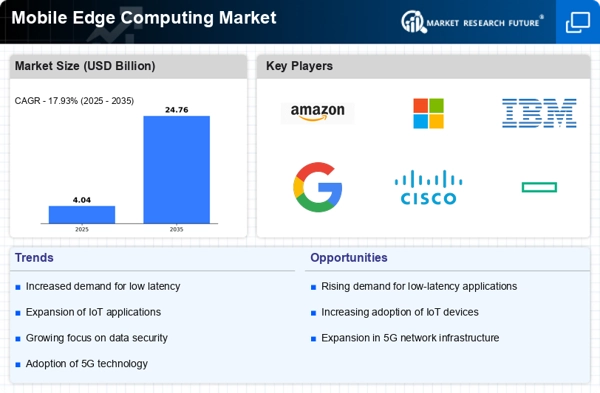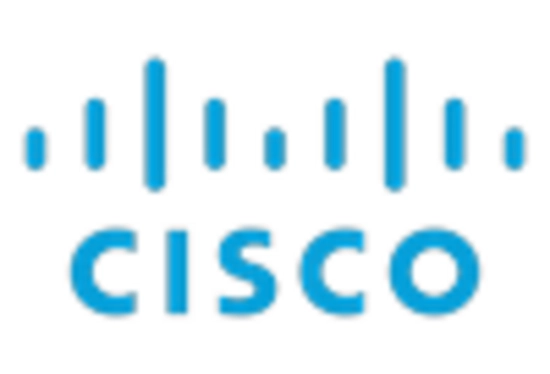Growth in Smart City Initiatives
The Mobile Edge Computing Market is poised to benefit from the rapid growth of smart city initiatives worldwide. As urban areas increasingly adopt smart technologies, the need for efficient data processing and management becomes critical. Mobile Edge Computing plays a vital role in enabling real-time analytics and decision-making for various smart city applications, such as traffic management, public safety, and environmental monitoring. Recent studies indicate that investments in smart city projects could reach over 2 trillion dollars by 2030, creating substantial opportunities for Mobile Edge Computing solutions. By processing data at the edge, cities can enhance operational efficiency and improve the quality of life for residents. This trend underscores the importance of Mobile Edge Computing in supporting the infrastructure required for smart city development.
Expansion of 5G Network Infrastructure
The Mobile Edge Computing Market is significantly influenced by the ongoing expansion of 5G network infrastructure. As telecommunications companies roll out 5G services, the demand for edge computing solutions is expected to rise correspondingly. The enhanced bandwidth and reduced latency offered by 5G networks create an ideal environment for deploying edge computing applications. Market analysts suggest that the global 5G infrastructure investment could exceed 1 trillion dollars by 2025, which will likely catalyze the adoption of Mobile Edge Computing technologies. This expansion enables businesses to process data closer to the source, thereby improving efficiency and reducing the load on centralized cloud servers. As a result, organizations are increasingly leveraging Mobile Edge Computing to optimize their operations and deliver superior services to their customers.
Rising Demand for Low Latency Applications
The Mobile Edge Computing Market experiences a notable surge in demand for low latency applications, particularly in sectors such as gaming, autonomous vehicles, and augmented reality. As users increasingly expect instantaneous responses, the need for edge computing solutions that minimize latency becomes paramount. According to recent estimates, the market for low latency applications is projected to grow at a compound annual growth rate of over 25 percent in the coming years. This growth is driven by the proliferation of 5G networks, which facilitate faster data transmission and processing at the edge. Consequently, businesses are investing in Mobile Edge Computing technologies to enhance user experiences and maintain competitive advantages. The integration of edge computing into various applications not only improves performance but also supports the development of innovative services that rely on real-time data processing.
Increased Focus on Data Privacy and Security
The Mobile Edge Computing Market is increasingly shaped by the heightened focus on data privacy and security. As organizations collect and process vast amounts of sensitive information, the need for robust security measures becomes essential. Mobile Edge Computing offers a decentralized approach to data processing, which can enhance security by minimizing the risk of data breaches associated with centralized cloud storage. Recent surveys indicate that nearly 70 percent of businesses prioritize data security in their technology investments. This trend is likely to drive the adoption of Mobile Edge Computing solutions that incorporate advanced security protocols and compliance measures. By addressing these concerns, organizations can build trust with their customers and ensure regulatory compliance, thereby fostering a more secure digital environment.
Emergence of Artificial Intelligence and Machine Learning
The Mobile Edge Computing Market is witnessing a transformative impact from the emergence of artificial intelligence and machine learning technologies. These advancements enable more sophisticated data processing and analytics at the edge, allowing organizations to derive actionable insights in real-time. The integration of AI and machine learning with Mobile Edge Computing can enhance operational efficiency and drive innovation across various sectors, including healthcare, manufacturing, and retail. Market forecasts suggest that the AI market could reach over 500 billion dollars by 2024, indicating a strong potential for growth in Mobile Edge Computing applications that leverage these technologies. As businesses seek to harness the power of AI and machine learning, the demand for edge computing solutions that support these capabilities is likely to increase, further propelling the Mobile Edge Computing Market.

















Leave a Comment